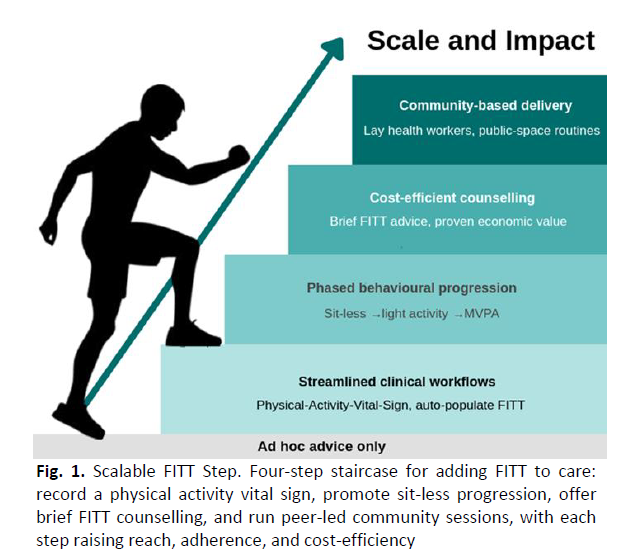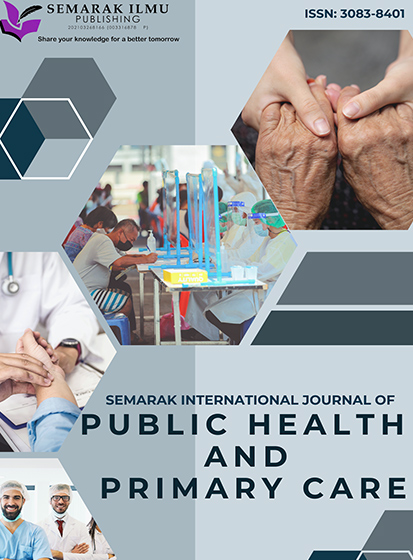Exercise as Medicine: A Review of FITT-Based Physical Activity Prescriptions in WHO and ACSM Guidelines for Health Promotion
DOI:
https://doi.org/10.37934/sijphpc.5.1.920Keywords:
Sedentary behavior, health promotion, guideline adherence, physical fitnessAbstract
Shortfalls in adherence to the Frequency, Intensity, Time and Type (FITT) parameters recommended by the World Health Organization (WHO) and the American College of Sports Medicine (ACSM) continue to limit the preventive potential of physical activity worldwide. This review collates epidemiological, mechanistic and intervention evidence on how precise FITT prescriptions influence cardiometabolic, musculoskeletal and mental-health outcomes, and examines the operational challenges of translating those prescriptions into routine care. We first outline population-level analyses that quantify the independent and combined effects of sedentary time, light movement and moderate-to-vigorous activity on disease risk. Next, we summarise laboratory and field trials that manipulate specific FITT elements, showing graded improvements in glucose regulation, blood pressure, lipid profiles and functional capacity when dose parameters are fully reported and progressively advanced. We then appraise implementation studies that integrate FITT assessment into electronic health records, brief clinician counselling and community delivery, highlighting gains in adherence, equity and cost-effectiveness. Finally, we identify research gaps concerning dose–response relationships, reporting quality, digital support and long-term maintenance, and propose a framework that pairs sitting-time reduction with scalable, culturally tailored FITT prescriptions. Collectively, the evidence supports positioning exercise, quantified through the FITT lens, as a core component of health promotion strategies endorsed by WHO and ACSM.









